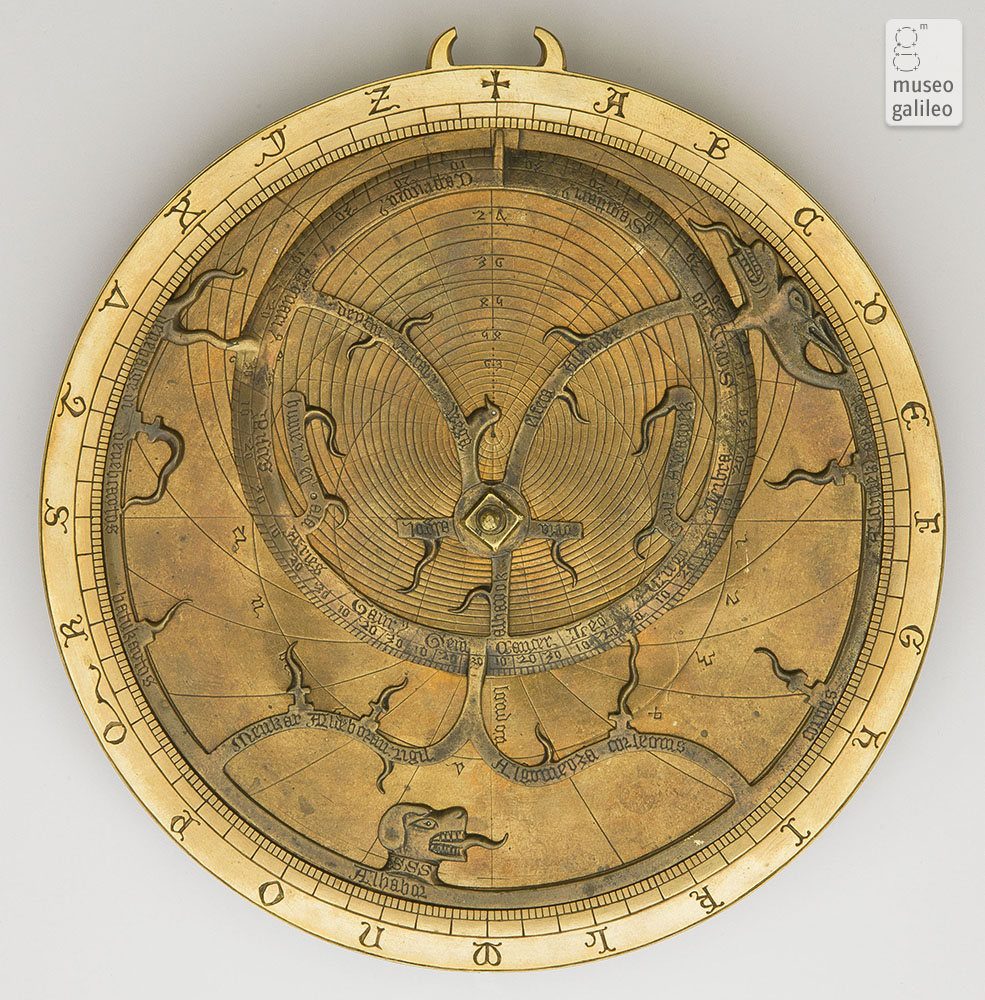
In May 2012 the Milanese collector Luigi Koelliker generously donated a rare scientific instrument made in medieval England to Museo Galileo. The Ministry for Cultural Heritage in fact recognized the exceptional historic and artistic importance of this object, a plane or planispheric astrolabe, with a decree dated March 3, 2002. Estimated to be dated back to around 1400, the astrolabe is a direct expression of the interests and scientific knowledge of Geoffrey Chaucer (ca. 1343-1400), the celebrated author of The Canterbury Tales.
There are three elements that unequivocally tie this astrolabe to the works of this great English man of letters. The first is its similarity to another well-noted instrument, the Painswick Astrolabe (ca. 1370, Museum of the History of Science, Oxford) which is one of the very few astrolabes created in England during Chaucer’s lifetime. The second element, which is even more amazing than the first, is the close visible analogy of Koelliker’s astrolabe with that of the manuscript Dd. 3.53 from the Cambridge University Library (United Kingdom) which itself contains a copy of the Treatise on the Astrolabe written by Chaucer in 1391. That particular copy has a precise design of the astrolabe where one can clearly see the zoomorphic bas-reliefs of the heads of a Dog, Dragon and Bird on its face that are also present in the donated piece. Lastly, this astrolabe was specifically made to be used at the latitude that corresponds to the London area.
Coming from an époque when literature and science were developing side-by-side, the “Chaucer Astrolabe” gives witness to the first attempts made by European scholars to emancipate themselves from the scientific supremacy of the Arabs in the field of constructing astronomical instrumentation. This precious instrument will soon find a special place among the permanent collection of Museo Galileo in Florence, Italy.
-
In-Depth


